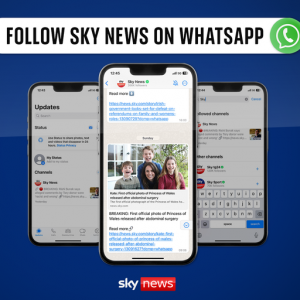Back at OpenAI, Sam Altman Outlines the Company’s Priorities

OpenAI said on Wednesday that it had completed the first phase of a new governance structure that added Microsoft as a nonvoting board member, as it works to end the divisions that fueled the ouster of Sam Altman as chief executive and sets itself up for a future as a bigger company.
In a blog post, Mr. Altman, who was rapidly reinstated last week, also outlined his priorities for OpenAI as he retakes the reins of the high-profile artificial intelligence start-up. He said the company would resume its work building safe A.I. systems and products that benefited its customers. He added that its board would focus on improving governance and overseeing an independent review of the events that led to and followed his removal as chief executive.
Microsoft expands a three-person board that OpenAI announced last week. The tech giant is one of OpenAI’s biggest investors, having committed $13 billion. Microsoft will be able to participate in OpenAI’s board meetings but not vote on business decisions.
“Part of what good governance means is that there’s more predictability, transparency and input from various stakeholders, and this seemed like a good way to get that from a very important one,” Mr. Altman said in an interview, referring to Microsoft.
The blog post was the first extensive commentary from Mr. Altman since the leadership crisis at OpenAI. Four board members fired him on Nov. 17, saying he hadn’t been “consistently candid” with them. That set off a frenzy, with more than 700 of OpenAI’s 770 employees signing a letter saying they would leave if Mr. Altman didn’t return. Within days, he reclaimed his job, and two board members said they would resign.
The drama was scrutinized because OpenAI is one of the most powerful players in artificial intelligence, a rapidly evolving technology that could help people become more productive, potentially displace jobs and be used to spread misinformation. The leadership crisis raised questions about the company’s governance structure, which is unusual because a nonprofit board is in control, as well as whether it had outgrown its roots and how it should move forward.
On Wednesday, Mr. Altman and Bret Taylor, a tech executive who has been appointed the new chairman of OpenAI, did not directly address these questions in blog posts. Without providing many specifics, they said the company would build a board that included members with expertise in technology and safety policy.
Mr. Taylor said OpenAI would remain committed to its mission of building artificial intelligence “that is safe and benefits all of humanity.”
For the foreseeable future, OpenAI’s board will consist of Microsoft; Mr. Taylor, an early Facebook officer and a former co-chief executive of Salesforce; Lawrence Summers, a former Treasury secretary; and Adam D’Angelo, the chief executive of the question-and-answer site Quora, who was among the members who ousted Mr. Altman.
In an interview, Mr. Taylor said he and Mr. Summers would oversee the independent review and select a law firm to conduct the investigation.
Microsoft declined to comment on its board membership.
Mr. Altman said OpenAI had not lost any employees during the leadership crisis. Its executive ranks will look similar to what they were before Mr. Altman’s ouster, with Mira Murati returning to her role as chief technology officer. Mr. Altman said Greg Brockman, the company’s former chairman, will be his partner and continue in his role as president.
The future of Ilya Sutskever, OpenAI’s chief scientist and a founder, is unclear. He was one of the board members who voted for Mr. Altman’s removal. Mr. Sutskever later said on X, the platform formerly known as Twitter, that he regretted his role in the ouster.
In his blog post, Mr. Altman said he harbored “zero ill will towards” Mr. Sutskever and was in discussions with him about “how he can continue his work at OpenAI.”

